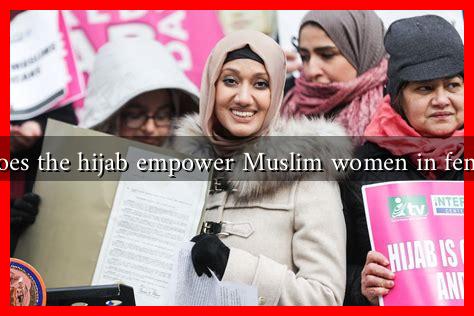-
Table of Contents
How Does the Hijab Empower Muslim Women in Feminism?
The hijab, a traditional headscarf worn by many Muslim women, is often misunderstood in contemporary discourse. While some view it as a symbol of oppression, many Muslim women see it as a powerful expression of their identity and autonomy. This article explores how the hijab empowers Muslim women within the framework of feminism, challenging stereotypes and promoting agency.
The Hijab as a Symbol of Choice
One of the most significant aspects of the hijab is the element of choice. For many Muslim women, wearing the hijab is a personal decision that reflects their beliefs and values. This choice is crucial in the context of feminism, as it emphasizes the importance of agency and self-determination.
- Personal Empowerment: Choosing to wear the hijab can be an empowering act, allowing women to assert their identity and beliefs in a world that often pressures them to conform.
- Reclaiming Identity: For many, the hijab serves as a means to reclaim their identity in a society that may marginalize or stereotype them.
- Resistance to Objectification: By choosing to cover their hair, women can resist societal pressures to conform to specific beauty standards, thus promoting body positivity and self-acceptance.
Challenging Stereotypes and Misconceptions
The hijab often faces scrutiny and misunderstanding, particularly in Western societies. However, Muslim women are increasingly vocal about their experiences, challenging stereotypes and misconceptions surrounding the hijab.
- Media Representation: Many Muslim women are taking to social media platforms to share their stories, showcasing the diversity of experiences among hijab-wearing women. Campaigns like #HijabDay and #MuslimWomenSpeak have gained traction, allowing women to express their narratives.
- Academic Contributions: Scholars like Dr. Amina Wadud and Dr. Leila Ahmed have contributed significantly to feminist discourse, emphasizing the importance of understanding the hijab within its cultural and religious contexts.
- Intersectionality: The hijab is a point of intersection for discussions on race, religion, and gender, allowing for a more nuanced understanding of feminism that includes diverse voices.
Case Studies: Empowerment Through Community
Numerous case studies illustrate how the hijab can empower women within their communities. For instance, organizations like Muslim Women’s Network UK work to support and uplift Muslim women, providing resources and advocacy for their rights.
- Community Support: Many hijab-wearing women find solidarity in community groups that celebrate their identity and provide a platform for activism.
- Leadership Roles: Women who wear the hijab are increasingly taking on leadership roles in various sectors, from politics to business, demonstrating that the hijab does not limit their capabilities.
- Educational Initiatives: Programs aimed at educating both Muslim and non-Muslim communities about the hijab help to foster understanding and respect, further empowering women who choose to wear it.
Statistics and Trends
Recent studies indicate a growing trend of Muslim women embracing the hijab as a form of empowerment. According to a 2020 survey by the Pew Research Center, approximately 62% of Muslim women in the U.S. reported that wearing the hijab made them feel more connected to their faith and identity.
Moreover, a 2021 study published in the Journal of Muslim Minority Affairs found that hijab-wearing women often report higher levels of self-esteem and body image satisfaction compared to their non-hijab-wearing counterparts. These statistics highlight the positive impact of the hijab on women’s self-perception and empowerment.
Conclusion: Embracing Empowerment Through the Hijab
The hijab is a multifaceted symbol that can empower Muslim women in various ways. By emphasizing choice, challenging stereotypes, and fostering community support, the hijab serves as a powerful tool for self-expression and agency. As more women share their stories and experiences, the narrative surrounding the hijab continues to evolve, contributing to a broader understanding of feminism that is inclusive and diverse.
In summary, the hijab is not merely a piece of clothing; it is a statement of identity, autonomy, and empowerment for many Muslim women. By recognizing and respecting this perspective, society can move towards a more inclusive understanding of feminism that honors the choices and voices of all women.


